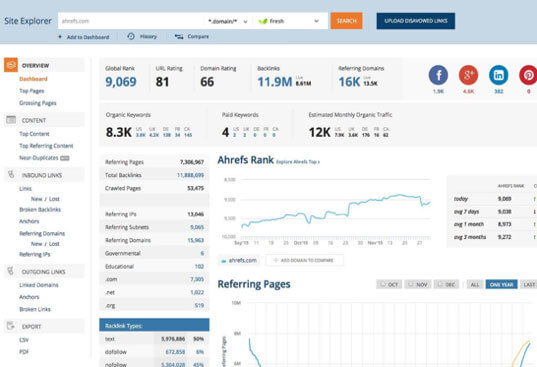Have You Lost Your Google Rankings? Follow These Steps
You are finally on the first page of Google for your target keywords. Traffic is on the rise and business has never been better. Sales are higher than the previous years and you even had to hire new staff to handle the growth.
But one day it all comes crashing down and your site is nowhere to be found in Google.
What happened?
The dreaded algorithm update.
Google is constantly changing its ranking algorithm to deliver more relevant results for each search query. These updates reward high quality sites but penalise sites that are engaged in questionable practices.
These include:
- Scraping or duplicating content from other sources
- Stuffing content with irrelevant keywords
- Building links using automated tools
- Buying links from spammy sources
If your site was recently penalised, it was likely due to one or both of the following algorithm updates:
- Panda: The Panda update was initially released in 2011 to combat the rise in webspam. Sites with “thin” or low quality content were primary targets while in-depth posts that were rewarded with higher rankings.
- Penguin: Released a year after Panda, the Penguin update targets sites that were ranking because of manipulative link building practices such as buying links or using automated tools. Sites with unnatural link profiles were also penalised with lower rankings.
There are many other updates but low quality content and spammy links account for a large majority of ranking penalties. The good news is that penalties are not permanent. Here we look at the steps involved to recover your rankings and get your site back on Google.
Conduct a Content Audit and Optimise Low Quality Content.
Even a few pages of low quality or spammy content can penalise your entire site.
So what you need to do is take a full inventory of every single page. Use a spreadsheet to keep track of your efforts. Mark down each of the following:
- Titles
- URLs
- Target keyword
- Meta description
- Bounce rate
- Average number of visitors
- Content quality
The whole point of an audit is to identify posts that are lacking in quality.
Once all the data is compiled, the next step is to either remove or rewrite those pages that violate quality guidelines. Even after making all the changes it can be a few months before you start ranking again in the search results. In the meantime, continue creating engaging content that provide value to your audience.
Conduct a Link Audit and Remove Spammy Links
Building as many links as possible to your pages may have worked before. But such practices are one of the main reasons for ranking penalties. If you are buying links or using automated tools that blast your content across hundreds of article directories, your rankings will take a direct hit.
Even if your site has not yet been penalised there is a strong chance that a future algorithm update will penalise your site. The solution then is to conduct a link audit, identify spammy links from questionable sources, and have them removed.
Use a tool such as ahrefs to analyse links to your pages.

Look through each of the sites that are linking to your pages.
Visit each one and take note of any that are obviously from spammy link networks. The next step is to find contact details and send a request to have the links removed. Some will respond to your request while others may not respond at all. For those links you can use the Disavow Tool which essentially tells Google to completely disregard certain links.
Even after removing spammy links your rankings won’t bounce right back up. It will take some time depending on when the next data refresh is. In the meantime continue removing spammy links and focus your efforts on building quality links from relevant sources.
After fixing your content and removing spammy links, you can submit a reconsideration request. Sign in to your Search Console account and visit the Manual Actions section. Then click on the Request a Review button. Your request can take some time to process so be patient.
Avoid SEO Practices That Violate Quality Guidelines
SEO is a proven marketing channel that can drive more sales to your business.
But Google’s algorithm has become significantly more sophisticated. Engaging in questionable practices from keyword stuffing your content to building spammy links will more than likely lead to a ranking penalty. What Google ultimately wants are high quality sites, not pages that rely on spammy tactics to rank.
Conclusion
If your site is no longer ranking in the search results, it is more than likely due to either the Panda or Penguin updates or even a combination of both. Conduct content and link audit to identify pages that are lacking in quality and spammy links. Then take steps to address these issues. Keep in mind that it may take some time to recover your rankings.
